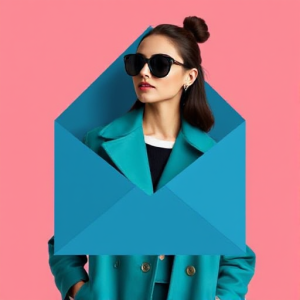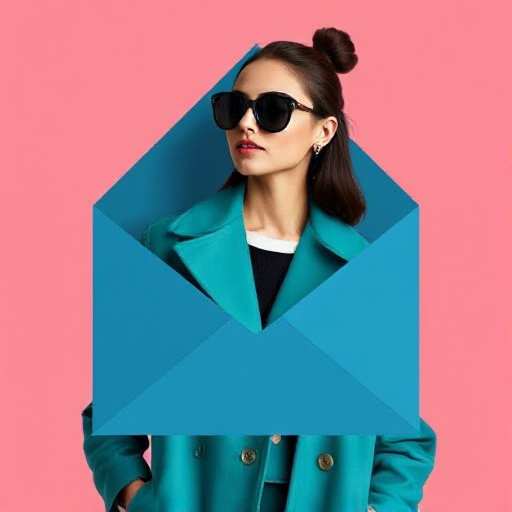
Email marketing has become an essential tool for brands in all industries, and the fashion sector is no exception. In a highly competitive industry where trends change rapidly, email marketing offers fashion brands the opportunity to directly connect with their target audience, build brand loyalty, and increase sales. Below is a comprehensive guide on how fashion brands can leverage email marketing to grow their business.
What is Email Marketing for Fashion?
Email marketing in the fashion industry involves using emails to communicate with potential and existing customers. It includes a variety of strategies, such as sending promotional offers, newsletters, product updates, event invitations, and personalized recommendations, all designed to engage the customer base and increase conversions.
Why is Email Marketing Important for Fashion Brands?
- Direct Communication: Emails allow fashion brands to communicate directly with their subscribers in a personal and intimate manner. This level of connection can significantly improve customer engagement and loyalty.
- Cost-Effective: Compared to traditional forms of advertising, email marketing is incredibly cost-effective. There are minimal overhead costs, and it offers a high return on investment (ROI).
- Personalization: With advanced segmentation and automation tools, fashion brands can create highly personalized email campaigns. This ensures that customers receive content that is relevant to their interests, preferences, and past shopping behavior.
- Increased Engagement: Through email marketing, fashion brands can send time-sensitive offers or limited-edition product drops, creating a sense of urgency and excitement among subscribers.
- Sales Growth: Email marketing drives direct conversions. Whether it’s announcing a sale, a new collection, or offering an exclusive discount, well-crafted emails can lead to a significant boost in sales.
Key Components of a Successful Fashion Email Marketing Campaign
- Building an Email List The foundation of any email marketing campaign is a solid email list. Fashion brands can grow their list by offering incentives such as:
- Discounts on first purchases
- Exclusive access to sales or events
- Freebies or downloadable content (e.g., style guides, lookbooks)
- Social media promotions and contests
- Segmentation To ensure that emails are relevant to subscribers, segmentation is key. For example:
- Demographic Segmentation: Age, gender, and location can help fashion brands tailor their messages to specific groups.
- Behavioral Segmentation: Based on customer activity (e.g., past purchases, website interactions, or abandoned carts), brands can send tailored product recommendations or reminders.
- Engagement Level: Segment your list based on how engaged customers are with your brand (e.g., active, dormant, or loyal).
- Compelling Subject Lines The subject line is the first thing a recipient sees, and it can determine whether your email is opened or ignored. For fashion brands, subject lines should be catchy, urgent, and descriptive. A few best practices include:
- Use emotive language (e.g., “Get ready for your next favorite outfit!”)
- Personalize the subject line with the subscriber’s name or preferences
- Include numbers or exclusivity (“50% off for subscribers only”)
- Create a sense of urgency or scarcity (e.g., “Last chance to shop our limited edition collection!”)
- Email Design Fashion is a visual industry, and the design of your emails should reflect that. Here are key design tips:
- Mobile Optimization: Many users access emails on their smartphones. Ensure your emails are mobile-friendly with responsive design.
- High-Quality Images: Showcase your products with professional, high-quality images. Lifestyle shots that show the clothing in real-life situations can resonate more than product-only images.
- Consistent Branding: Maintain consistent use of colors, fonts, and logos to strengthen brand recognition.
- Clear Calls to Action (CTAs): Every email should include a clear CTA. Whether it’s a “Shop Now,” “See the Collection,” or “Sign Up for Exclusive Access,” ensure it’s easy for the reader to take action.
- Personalization Customers want to feel special, and personalized emails make them feel valued. Here’s how you can personalize:
- Name Personalization: Using the subscriber’s first name in the email or subject line can create a more intimate connection.
- Product Recommendations: Based on past purchases or browsing behavior, send emails with products tailored to their tastes.
- Birthday and Anniversary Emails: Send personalized discounts or special offers on subscribers’ birthdays or anniversaries, making them feel appreciated.
- A/B Testing A/B testing allows you to experiment with different email formats, designs, subject lines, and content to determine what resonates best with your audience. Regularly testing your emails ensures you’re always improving your campaigns and optimizing for better performance.
- Automated Email Campaigns Automation allows fashion brands to send timely and relevant emails without manual intervention. Common automated emails include:
- Welcome Emails: Introduce your brand to new subscribers with a welcoming message and special offer.
- Abandoned Cart Emails: Remind customers who left items in their cart to complete their purchase. You can even offer a discount or free shipping to entice them.
- Re-engagement Emails: Send personalized emails to dormant subscribers to bring them back into the fold with special offers or product recommendations.
- Post-Purchase Emails: Encourage customers to share their experiences, leave reviews, or make repeat purchases by offering complementary products.
- Analytics and Metrics To measure the effectiveness of your email campaigns, it’s essential to track key metrics, including:
- Open Rate: The percentage of recipients who open your email. A low open rate might indicate that your subject lines need improvement.
- Click-Through Rate (CTR): The percentage of recipients who click on a link within your email. A low CTR could mean that your content or CTA needs refinement.
- Conversion Rate: The percentage of recipients who complete a desired action, such as making a purchase. This metric is crucial for evaluating the ROI of your campaigns.
- Unsubscribe Rate: A high unsubscribe rate could indicate that your emails are too frequent or irrelevant to your audience.
Best Practices for Fashion Email Marketing
- Create Urgency: Use time-sensitive offers or limited-edition collections to motivate customers to act quickly.
- Leverage User-Generated Content (UGC): Feature customer reviews, photos, and testimonials to build trust and showcase real-world use of your products.
- Experiment with Seasonal Campaigns: Take advantage of holidays, fashion weeks, and seasonal trends to craft timely and relevant email content.
- Incorporate Social Proof: Include customer reviews, social media mentions, or influencer collaborations to enhance credibility.
- Build a Community: Use email to foster a sense of belonging, sharing style tips, behind-the-scenes content, or collaborations that create emotional connections with your audience.
Email marketing is an invaluable tool for fashion brands, providing an effective way to build relationships, engage customers, and increase sales. By focusing on personalization, segmentation, and high-quality design, fashion brands can create memorable email campaigns that resonate with their audience. Regular testing, optimization, and monitoring of key metrics ensure that campaigns continue to evolve and remain effective in a fast-paced industry.
